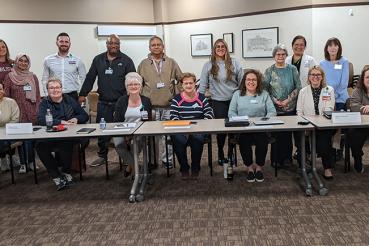Coordinated efforts to identify and meet the social needs of patients can lead to lower health care use and costs, and better outcomes for patients, according to a study by researchers at Rush University Medical Center published in the March issue of Health Affairs in conjunction with The New York Academy of Medicine.
The study examined evidence from seven innovative care models currently in use, each with strong social support services components. The study showed that providing social support, including homemaker services, assessment by a social worker, transportation, emotional support for patients, and caregiver and legal assistance, can have a positive impact when provided in conjunction with both impatient and primary care.
Several health care models generated reductions in costs and patient stays. For instance, the Vermont Blueprint for Health showed a 21 percent reduction in inpatient use of services, resulting in a 22 percent cost reduction per person.
“Many vulnerable patients, including older adults and people with low incomes or chronic illnesses, face social challenges daily,” said Gayle Shier, MSW, the study’s lead author and program coordinator of the Health and Aging Department at Rush University Medical Center. “As a result, a patients’ compliance with their medical care plan may become secondary to meeting needs that are perceived as more urgent, such as obtaining food, caring for a loved one or seeking employment.”
An array of community-based services exist that can be engaged to address social issues resulting in medical consequences, according to Shier. For example, there is a robust system of community-based organizations, a network for the aging and disabled, long-term service and support programs, and mental health services. Social service providers offer in-home support, assistance with daily living activities and transportation, and their familiarity with patients often makes them privy to information that can be useful in health care planning for patients in various settings.
“Improving the system will require better integrated care — care that challenges the current silos that foster limited communication, collaboration and coordination not only between medical professionals in different settings but also between medical and social services,” said Robyn Golden, LCSW, study co-author and director of Health and Aging at Rush. “Care that is better integrated in all of these respects is particularly important for older adults, those with chronic conditions and those with complex care needs. We need uninterrupted attention to patients’ social needs, which may evolve but are unlikely to disappear as they go through different life stages.”
More research is required to determine which social service components yield desired outcomes for specific patient populations. The study was published in collaboration with Julianne Howell (Health and Human Services, county of San Diego), Michael Ginsburg (The New York Academy of Medicine) and Patricia Volland (The New York Academy of Medicine).



